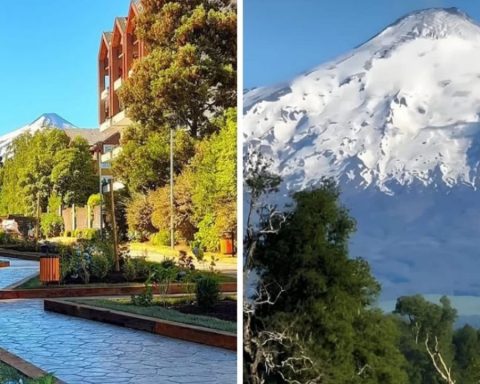The Minister for the Environment, Maisa Rojasaffirmed that the 20 companies in the Quintero-Puchuncaví industrial cordon “are going to leave” and that Chile “is in the process of stopping using fossil fuels to produce energy.”
“They are going to leave because of the decarbonization plan of the Climate Change Framework Law. There are two thermoelectric plants, one of them is now closed in June and the other for the next two years,” said the head of the Environment in conversation with The Mercury.
You may also like:
When asked by the rest of the company, he pointed out that there are six that “emit volatile organic compounds, because they work with fuel. Where is Chile going? To defossilization, we are going to stop using fuel.”
“They are going to come out,” he reiterated, adding that “Chile is in the process of stopping using fossil fuels to produce energy; we are talking about coal, oil and its derivatives, diesel, gas, and we are going to generate energy with sources renewable”.
“This gives us a very clear roadmap, it gives us legal certainty that Chile is going to require an unprecedented level of investment,” he emphasized.
Closing windows
Minister Rojas also referred to the decision of the board of directors of the National Copper Corporation (Codelco), which approved moving towards the closure of the Ventanas smelter, located in Quintero, due to episodes of contamination in the area. the
The state company’s decision triggered a strike by the Federation of Copper Workers (FTC), which began on Wednesday and ended on Thursday after a meeting with Codelco representatives.
“What happens in Quintero-Puchuncaví is the most acute symptom of a dirty way of developing. At some point, decisions have to be made to change that route to face the climate change crisis, and we have to face it urgently. I feel that we are not taking weight,” Rojas said.
“Codelco is responsible for 62% of sulfur dioxide emissions, one of the pollutants that causes serious poisoning and serious health effects. If the smelter closes, obviously the probability that we will have new episodes of pollution and poisoning by sulfur dioxide are significantly reduced,” he pointed out.
Regarding the process of closing the foundry, the head of the Environment commented that it will last at least five years.
In the first instance, Codelco must obtain a temporary closure permit from Sernageomin, a process that can last between eight and 12 months, explained the secretary of state.
“Then there is a law to close mining operations, where the company has to submit a project to the Environmental Assessment Service (SEA), and it also takes a while for the SEA to give it the Environmental Qualification Resolution (RCA), to the closing process, which includes engineering project, dismantling, etc,” he added.
“Then comes the dismantling itself. Minimum, it’s five years, it could be more,” he added.
















